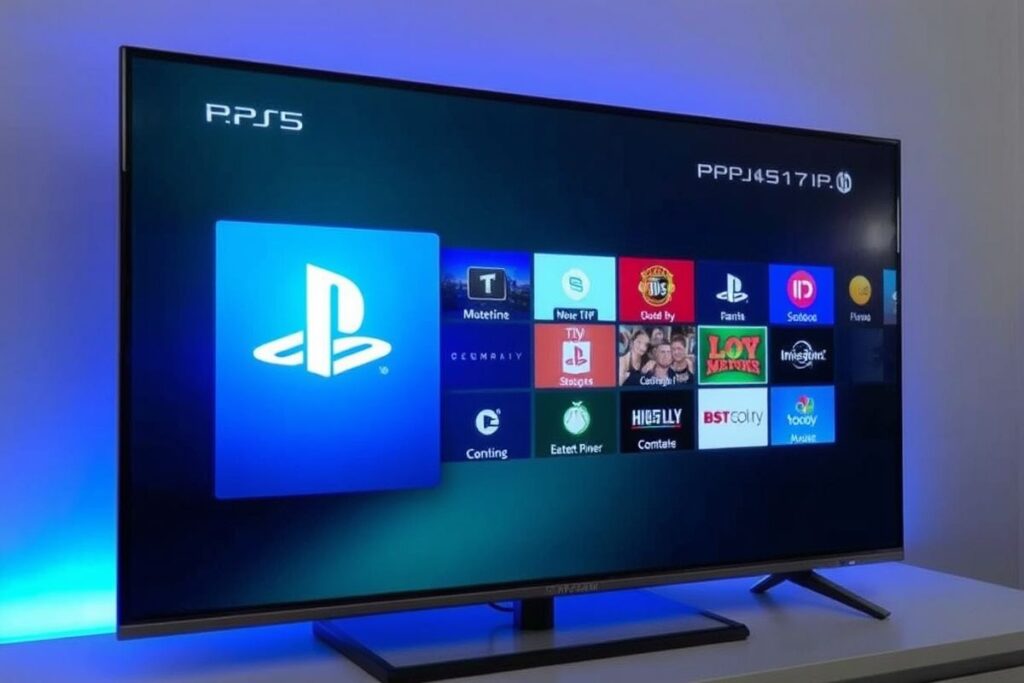Your PS5 and TV are technological marvels, designed to deliver breathtaking gaming experiences. But did you know that keeping your TV’s firmware updated can significantly impact your console’s performance and compatibility? Firmware is the underlying software that controls your TV’s hardware. It’s the brains behind the operation, dictating how it processes signals, displays images, and manages its features. Outdated firmware can lead to a range of issues, from minor inconveniences like input lag to more serious problems like incompatibility with the latest gaming consoles, including the PS5. This can mean missing out on features like Variable Refresh Rate (VRR) and 4K at 120Hz, features crucial for a smooth and immersive gaming experience. In this article, we’ll delve into why staying on top of your TV’s firmware updates is essential for optimal PS5 compatibility and overall performance. We’ll explore the benefits, the potential pitfalls of outdated firmware, and guide you through the process of checking and updating your TV’s software.
Understanding the Importance of Firmware Updates

Enhancing PS5 Compatibility
Keeping your TV’s firmware updated ensures compatibility with the ever-evolving technology of the PS5. New gaming consoles often require the latest display technologies, and outdated firmware can prevent your TV from fully supporting these advancements.
For instance, features like HDR, VRR, and 120Hz refresh rates often require specific firmware versions to function correctly. Without these updates, you might experience visual glitches, input lag, or even a complete lack of support for these crucial features.
This is where firmware updates come into play. They bridge the gap between your TV’s hardware and the demands of new consoles, ensuring a seamless and optimized gaming experience.
Improving Picture Quality and Performance
Beyond PS5 compatibility, firmware updates can dramatically improve your TV’s overall picture quality and performance. Manufacturers often release updates that enhance color accuracy, contrast, and motion handling.
These updates can also address bugs and glitches that might be affecting your viewing experience. From fixing minor visual artifacts to resolving more significant performance issues, firmware updates play a vital role in ensuring your TV operates at its best.
Think of it as fine-tuning your TV’s engine. Regular updates keep everything running smoothly and efficiently, ensuring you get the best possible picture quality from your investment.
Adding New Features and Functionality
Firmware updates can also introduce new features and functionalities to your TV. Manufacturers often add support for new streaming services, improve smart TV interfaces, and introduce new picture modes.
These updates can breathe new life into your TV, expanding its capabilities and keeping it up-to-date with the latest technological advancements. They can transform your viewing experience, adding convenience and unlocking new possibilities.
By staying on top of firmware updates, you ensure your TV remains a cutting-edge entertainment hub, capable of delivering the latest and greatest features.
Checking and Updating Your TV’s Firmware
Finding Your TV’s Current Firmware Version
Before updating, it’s important to know your TV’s current firmware version. This information is usually found in the TV’s settings menu, typically under a section called “Support,” “About,” or “System Information.”
The exact location may vary depending on your TV’s brand and model. Consult your TV’s user manual for specific instructions.
Once you’ve located the firmware version, note it down so you can compare it with the latest available version.
Downloading the Latest Firmware
Most TV manufacturers provide firmware updates on their support websites. Locate your specific TV model and look for the “Downloads” or “Software” section.
Download the latest firmware file to a USB drive. Make sure the USB drive is formatted correctly, usually in FAT32 format, as specified by your TV’s manufacturer.
Carefully follow the instructions provided by the manufacturer. Incorrect formatting or improper download can cause issues during the update process.
Installing the Update
With the firmware file on your USB drive, plug the drive into your TV’s USB port. Navigate to the TV’s update section, usually found in the same menu where you checked the current firmware version.
Select the option to update from USB and follow the on-screen prompts. Do not interrupt the process, as this could damage your TV’s software.
Once the update is complete, your TV will restart. You can then verify that the update was successful by checking the firmware version again.
Troubleshooting Firmware Update Issues
Common Problems and Solutions
Occasionally, you might encounter issues during the firmware update process. These could include the update failing to start, the TV freezing during the update, or the TV not recognizing the USB drive.
Common solutions include ensuring the USB drive is formatted correctly, trying a different USB drive, or downloading the firmware file again.
If the problems persist, consult your TV’s manufacturer’s support documentation or contact their customer support for assistance.
| Problem | Solution |
|---|---|
| TV not recognizing USB | Try a different USB drive or reformat the current one. |
| Update failing to start | Ensure you have the correct firmware file for your TV model. |
| TV freezing during update | Do not interrupt the process. Contact customer support if it persists. |
- Always double-check the firmware file is for your specific TV model.
- Do not turn off the TV during the update process.
- Ensure a stable power supply during the update.

Leave a Reply